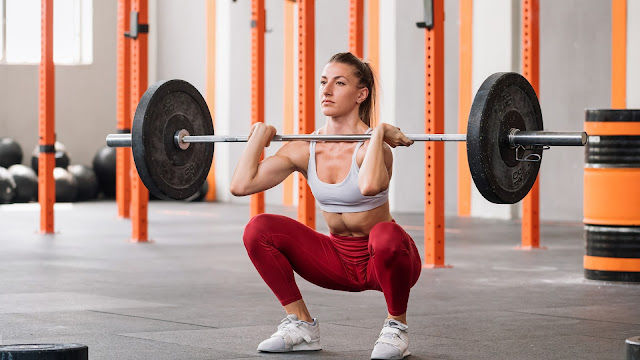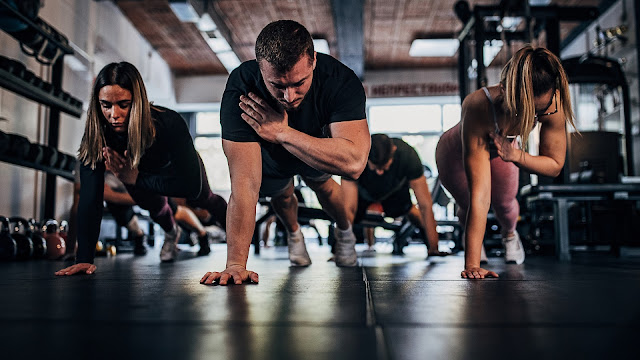 |
| Blueprints for Body Transformations: Crafting Your Perfect Workout Plan |
Seven years ago, I really felt that I loathed exercise.
I bunked every PE and games session in school; I would go for a run only if I was feeling pressured or nervous, and not once did I find myself loving exercise.
When I began dating a personal trainer, there wasn’t a solid reason not to go to the gym with him, so off I trekked, scheming how to please him while simultaneously doing as little effort as humanly possible.
For our very first training session, he walked me over to the Smith Machine and taught me how to squat. It seems too wonderful to be true, yet within minutes, I was hooked.
I had never done exercise like this before—an activity that genuinely felt wonderful while you were doing it. Exercise that I wanted to perform for a whole hour, then do again the following day.
Looking back, I can honestly say that weightlifting has absolutely transformed my life. Now, I like exercising; I’ve boosted my fitness and have grown physically strong, feeling successful, feeling pushed, seeing aesthetic definition, etc. From the inside out, my whole life has been substantially benefited by this specialized discipline.
And with every passing year, I witness the stigma surrounding female weight lifting erode away. The weight portion of my gym has progressively increased from being 10% female to 50% female. Women now realize that doing weights doesn’t make them ‘bulky’; it makes them ‘toned’, and the concept that the weights portion of the gym is ‘the men’s area’ is now firmly a thing of the past.
However, there are still a lot of ladies out there who want to lift weights but are too frightened to start. A lot of these ladies may be fascinated by the results of this form of exercise but are too frightened of getting ‘bulky’ to get off the treadmill. So, sure, there is still an element of truth in the assumption that girls dread weight lifting, but it has now become the exception, not the norm.
Now men and women are aware of the physical and emotional advantages of weight lifting and are becoming proponents of the activity. These advantages include:
- Weight management
- Increased muscular mass
- Aesthetic body change via changing body composition (fat reduction paired with increased muscular mass, dubbed ‘toning’)
- Basal metabolic rate rise (up to 10%)
- Increased bone density (aiding anti-aging and reducing osteoporosis)
- Anti-aging physicality (better movement control, physical function, physical performance, and speed)
- Improvement in cardiovascular health
- Reduced blood pressure
- Management of chronic pain
- Studied and now verified benefits in general mood, anxiety, and depressive tendencies
These are only some of the reasons why I lift weights, but what is the major reason? It’s enjoyable. While I do like cardio, long winter walks, steamy circuit training, and swimming, absolutely nothing gets me as happy as weightlifting—it’s tough, it’s thrilling, and it’s gratifying.
So, here we are... Welcome to Transform Your Body with Weights, a weight-lifting guide for every level of lifter, even those of you who’ve never lifted a weight in your life!
Understanding Form BEFORE YOU BEGIN
Form is your physical ability to accomplish a lift properly. For example, a squat demands a straight back at all times, bending only at the hips and knees. Your knees should be facing forward, just above your toes at all times, and after you have achieved your complete range of motion (as low as you can go), you stand up straight again, pressing down with your heels. If you were to bend forward, allow your knees to invert, or push up through your toes, all of these would suggest incorrect form.
Once your form is near flawless, then you may concentrate on increasing weight and/or adjusting your sets and rep ranges (see pages 14–15). This is commonly referred to as ‘overload’ and is crucial to improving your muscle development and/or strength and performance objectives.
No matter what your aim is (endurance, hypertrophy, or strength), form should always be paramount and weight secondary.
CHOOSING YOUR WEIGHT-TRAINING GOAL
Endurance Training
Endurance training is great for people looking to develop their ‘functional’ training skills, such as triathletes, distance runners, and rowers. If you are a cardio bunny seeking to adopt some weight training to enhance your sport, then endurance is great for you.
Endurance training is often 2–3 sets of 15+ repetitions before muscular depletion. Reps are how many times you complete the workout. For example, 15 squats equal 15 repetitions. Sets represent how many times you repeat the exercises. (For example, 3 sets = 15 repetitions completed 3 times, with a brief break between sets.)
Hypertrophy Training
(the development of a muscle)
Hypertrophy training (muscle building) is my preferred type of weight lifting for people looking to gain muscle mass and is my preferred kind of weight lifting. If you have a physical goal and are looking for attractive muscular results, hypertrophy is for you.
Hypertrophy is generally 3–4 sets of 6–12 repetitions before muscle depletion.
Strength Training
(the muscle’s capacity to create force against opposition)
Strength training (or powerlifting) is great for people looking to develop their physical strength and truly love their weightlifting. It generally only asks for 3 exercises: squat, deadlift, and bench press, since these are the competitive lifts. However, in recent years, two frequent workouts have been introduced to the training: the military press and the barbell row.
Hypertrophy ‘accessory work’ (see below) has also become a prevalent motif in strength training, so if you’d like to add some hypertrophy to your strength regimen, that is entirely okay.
Strength training is normally 1–5 sets of between 1–5 reps before muscle exhaust (meaning you lift really heavy weights and have 1–5 reps MAX before you exhaust).
Conclusion
It is important to note that even though you should be focused on one specific objective—eendurance, hypertrophy, or strength—one discipline might benefit the other. For example, endurance may considerably affect and increase both hypertrophy and strength, particularly when it comes to those huge compound movements, such as squats, which demand general physical conditioning. Hypertrophy training may considerably boost your strength objectives, since the more muscle you have, the stronger you are in your lift. Strength may boost your hypertrophy, since the stronger you are, the more weight you can move in your sets and reps range. And around and around we go!
As a result, while I suggest you set one objective and stick to it most of the time if you like tossing in the occasional curveball activity, session, or even week of training, it may significantly boost your overall performance. This is commonly referred to as accessory work. On the other side, with strength training, if you take a week away from overload and allow your body to heal, this is termed a deload week.


.jpg)
.jpg)




